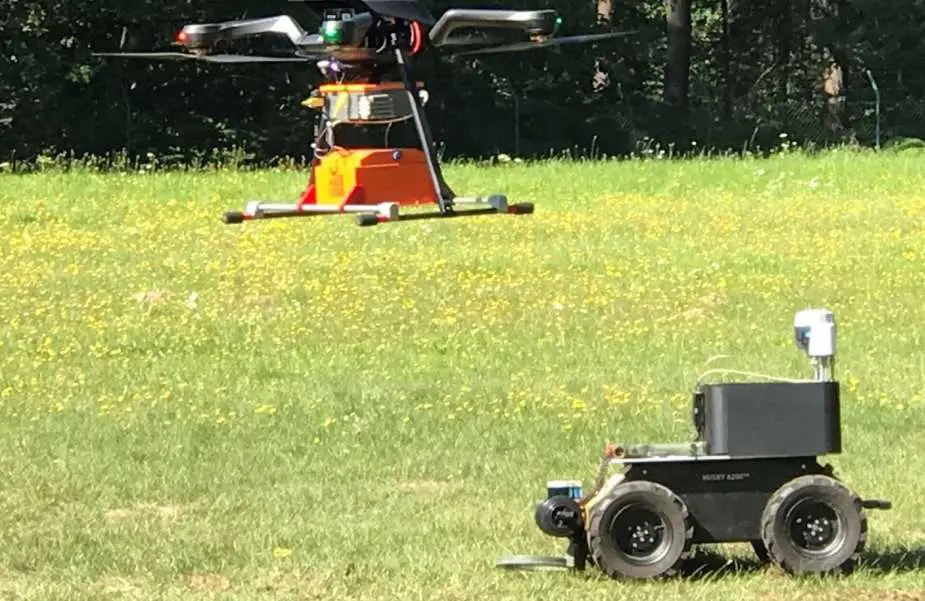Breaking news
EDA-monitored Artificial Intelligence for Detection of Explosive Devices project goes forward.
The European Defence Agency has overseen the final demonstration of coordination between aerial and ground unmanned systems in the detection of explosives. During the demonstration, one aerial unmanned system and two ground unmanned systems, each equipped with different sensors, undertook a complete autonomous search to detect mock-ups of explosives and improvised explosive devices, including unexploded ordinance – both in rural and urban areas. The demonstration took place on 7 September 2023 in Belgium at the bomb detection centre DOVO/SEDEE.
Follow Army Recognition on Google News at this link

The consortium faced issues such as the sensitivity of some sensors to soil humidity and to the movements of the carrier, the sensitivity of the systems to high temperatures and the precision of the navigation (Picture source: EDA)
The €1.55 million project, Artificial Intelligence for Detection of Explosive Devices, or AIDED, was granted funding through the Preparatory Action on Defence Research (PADR) in the 2019 call. PADR is a precursor to the European Defence Fund (EDF), of which the European Commission has overall responsibility. Monitored by EDA, AIDED is managed by a consortium of four entities, including Germany’s Fraunhofer-Gesellschaft, and headed by the Belgian SME Space Applications Services.
September’s demonstration shows the maturity of the system so far, reaching a Technology Readiness Level of three-to-four. While TRL was the goal, it also means the technology still needs to be taken further to ensure it is foolproof.
Powerful laser beam
Different sensors were used for the demonstration and there was a specific focus on each of them. The sensors used for detection were:
* The EMI (EM metal detector); the Ground Penetrating Radar for more accuracy – although it is sensitive to the movements of the carrier; the Laser Induced Breakdown Spectroscopy, using a powerful laser beam to create a small plasma of the area to be analysed by a spectrometer; and a bigger sensor used for final identification.
* Neural networks were trained for each type of sensor signal processing, based on labelled data sets acquired during the project. Labelling the detections by the different sensors was an important part of the trials, and although time-consuming, it was a major step in showing the improvements made by the AI algorithms.
* Other sensors were used for localization and mapping algorithms for robot navigation and to cope with situations such as in an environment where the Global Positioning System was denied or degraded.
The consortium faced issues such as the sensitivity of some sensors to soil humidity and to the movements of the carrier, the sensitivity of the systems to high temperatures and the precision of the navigation. The consortium showed their 'detect and avoid' system for avoiding collision between the UAV flying at very low altitude for good detection and the UGVs.
Next step: AIDEDex
Overall the demonstration, as part of the project’s concluding phase, showed how artificial intelligence can be used effectively in several aspects of an unmanned systems operational environment such as mission planning, self-navigation, teamwork, and last but not least explosive device detection, tasks that have been performed autonomously with minimal human intervention.
A follow-up project, known as AIDEDex, has been selected from the European Defence Fund 2022 call and will take further the efforts on unmanned ground and aerial systems for hidden threat detection. The project will have a duration of 48 months with six partners from five EU Member states.

During the demonstration, one aerial unmanned system and two ground unmanned systems, each equipped with different sensors, undertook a complete autonomous search to detect mock-ups of explosives and improvised explosive devices, including unexploded ordinance (Picture source: EDA)
Defense News October 2023


























